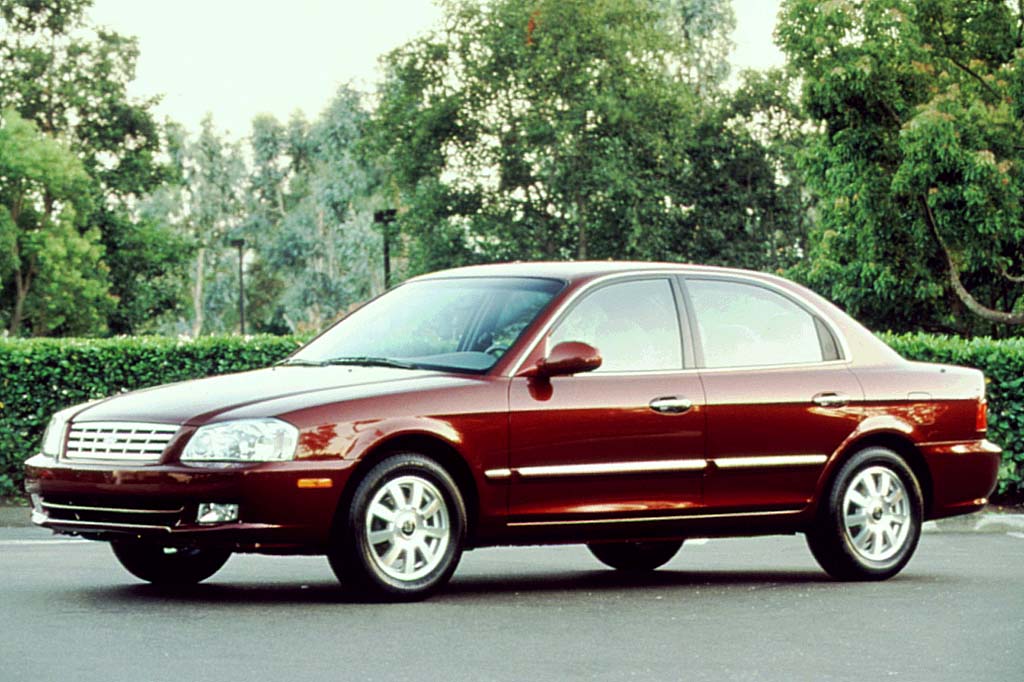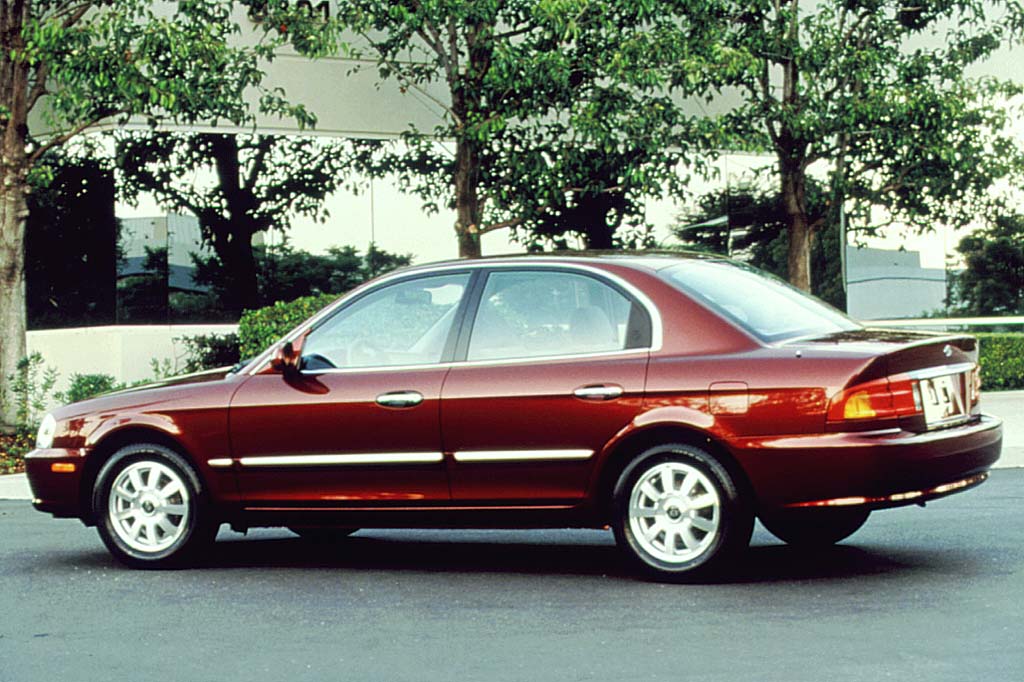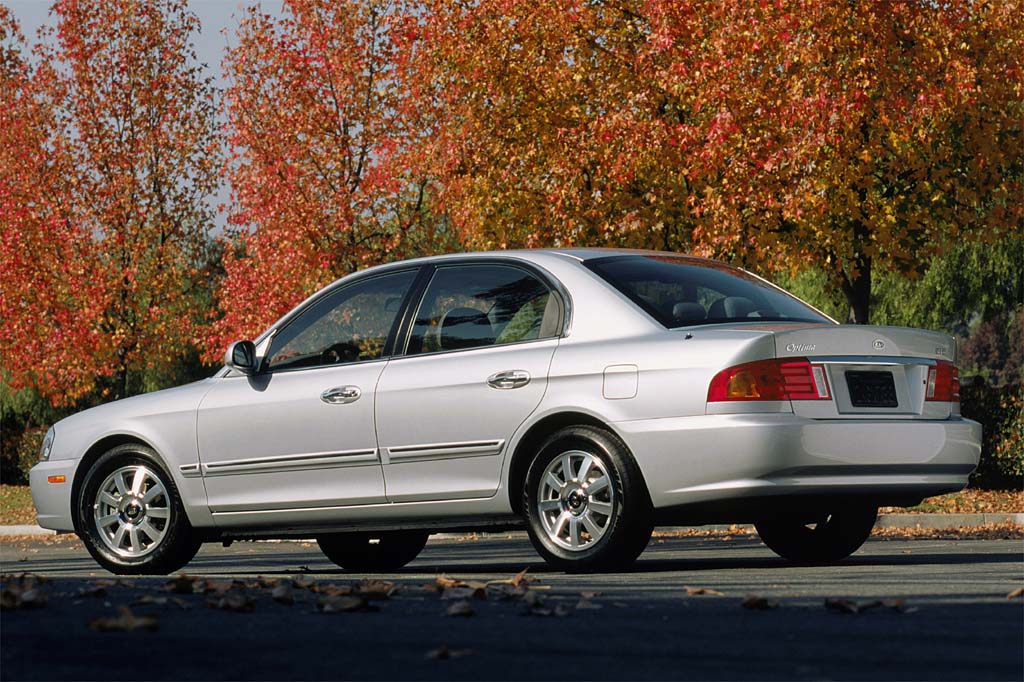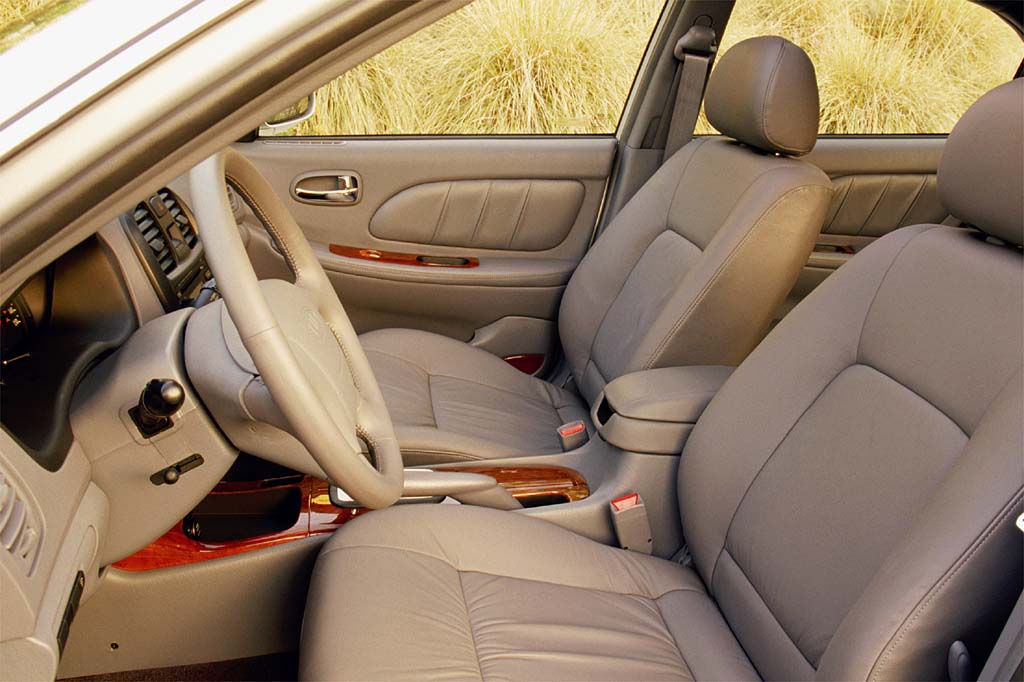| Midsize car; Built in South Korea |
|
|
| Good condition price range: $1,600 – $5,900* |

2001 Kia Optima

2001 Kia Optima

2002 Kia Optima

2002 Kia Optima interior

2003 Kia Optima
| Pros: |
|
| Cons: |
|
In terms of equipment and comfort, Optima and Sonata offer impressive value for the money. Though they serve as bargain-priced Camry alternatives that have little need for apologies. Both have suffered from low resale values associated with South Korean cars, this can be good news for used-car shoppers. Generous warranties, however, do not offset the quality concerns.
Overview
After finishing the 1990s with only subcompacts cars and an SUV, Kia introduced a large compact four-door, front-wheel-drive sedan named Optima for 2001. The Optima was based on the Hyundai Sonata, produced by Kia’s South Korean corporate parent. Sales of the five-passenger “flagship” sedan began late in 2000.
Both LX and uplevel SE Optimas used the Sonata’s four-cylinder and V6 engines. The four-cylinder teamed with a manual gearbox or four-speed automatic transmission, but the 2.5-liter V6 was automatic-only. Optimas with V6 power had Tiptronic technology, with a separate gate for manual shifting, when desired.
Front side airbags were standard. Antilock braking and leather upholstery were optional with the V6 version, though Optima did not offer the Sonata’s available traction control. Optimas with the V6 also had rear disc brakes in place of drums.
As it did with other products, Kia promoted the Optima’s low price and abundant standard features, compared to Japanese-brand competitors. At 106.3 inches, the Optima’s wheelbase was nearly identical to the Honda Accord. Overall, the Optima was 3 inches shorter than an Accord, but about the same as a Nissan Altima. Optimas had a fully independent suspension and either 14- or 15-inch tires.
Standard LX equipment included air conditioning, power windows and locks, power mirrors, and variable intermittent wipers. The SE added alloy wheels with Michelin tires, fog lights, a moonroof, keyless entry, a cassette/CD player, and an eight-way power driver’s seat.
Yearly Updates
| 2002 Optima A larger V6 engine topped the short list of 2002 changes to Kia’s compact sedan. The V6 grew from 2.5 liters to 2.7 liters this year, with a gain of 8 horsepower. In other 2002 changes, 15-inch wheels replaced 14-inchers as standard equipment, and SE sedans gained standard automatic headlights and an available power front passenger seat. |
| 2003 Optma Exterior styling revisions marked the 2003 Optimas, including a new grille and hood, larger bodyside moldings, and freshly-designed taillights. Inside, a revised center stack housed new audio and climate controls. LX models gained a standard CD player. Both engines returned for 2003 with reduced horsepower ratings. |
| 2004 Optima The Optima got larger wheels, 16s instead of 15s, and a newly designed grille for 2004. |
| 2005 Optima No changes of note were made this year. |
| 2006 Optima There were no major changes for the 2006 Optima. |
